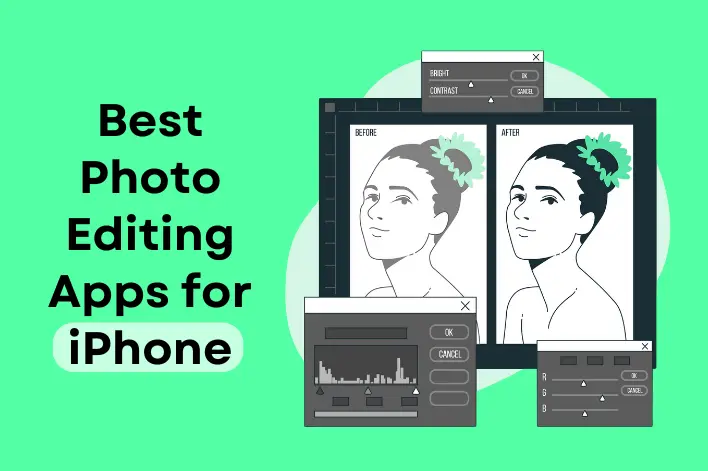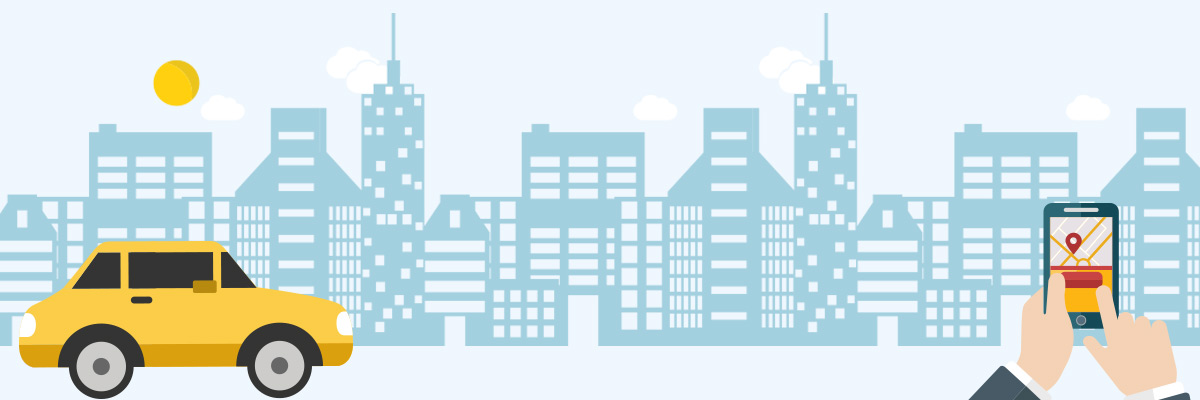You're already late for an important meeting, and the cloudy sky doesn't seem like it cares. On top of it, you saw a flat tire as you entered your parking. All reasons to get frustrated. Right?
But then you tap your mobile screen a few times, and 'ta-da.' A cab is waiting just for you at your location.
It seems like a dream. If it weren't for Uber, our cities would have been less livable. Uber created a big, profitable industry segment out of nowhere in the form of app-based on-demand services.
There isn't a better model for the on-demand economy than Uber. Regarding the online ecosystem, the Uberization of on-demand services has been a hot business model globally.
In the last few years, demand for on-demand services has shot up enormously. The growth in the millennial population has been a positive factor in the growth of the on-demand economy.
Demand for On-demand Services: The Millennial Equation- Usage by Age Group
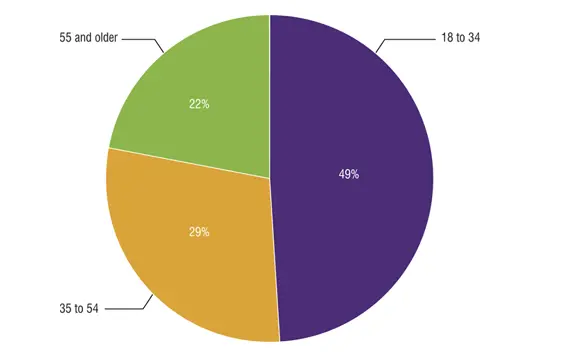
( Source: Medium )
Increased usage of Uber-like services in segments like salons, personal grooming, haircuts, etc., has enhanced growth opportunities for haircut startups and entrepreneurs.
More and more companies are planning to develop and launch apps like Uber for haircuts.
If you also feel it is a great idea for a sustainable business, read on to explore how to shape this idea into a profitable business model.
Why Does Uber for Haircuts Make Sense in Post COVID-19 Era?
No one can deny that COVID-19 came as a blow to the business community.
However, the on-demand economy has boomed even throughout the last few years. The main reasons for its growth are the convenience and safety promised by on-demand startups.
If we think of an on-demand app for haircuts, here are a few reasons that are favorable for its growth.
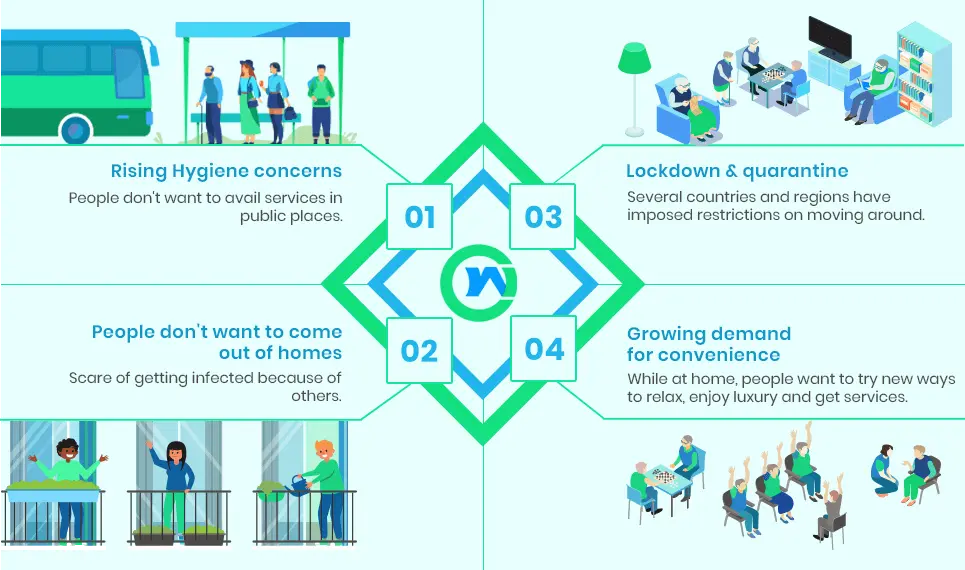
Developing an App Like Uber for Haircuts: Starting with an Idea
Okay! Now you've got an idea of the opportunity. The next thing you need to refine is the idea.
Well, you already have many startups offering Uber-like services in different niche segments. Entrepreneurial ventures are underway to develop beauty on-demand apps and platforms akin to Uber for laundry apps and Uber for handyman services.
You'll have to ensure a solid business model for an on-demand haircut app. Essentially, your app would have to tackle the needs of two stakeholders:
- Service seekers
- Service providers
Your app should serve as an intermediary or marketplace for customers to search for service providers, connect them to providers, and offer the option to pay for the service.

Must-have Features for an App Like Uber for Barbers
The Great Paradox: Handling Customer Bookings on On-Demand Haircut Apps
You've got an idea and a feature list for your on-demand haircut app. The next big step is establishing a solid process flow to ensure smooth operations.
Managing the service delivery process efficiently is crucial for a startup offering on-demand services.
A marketplace app for haircuts, barber shops, and beauty & spa specialists can face challenges with the appointment booking approach.
Here are three effective ways to manage bookings and service delivery when running an on-demand haircut startup:
1. Automatic Assignment
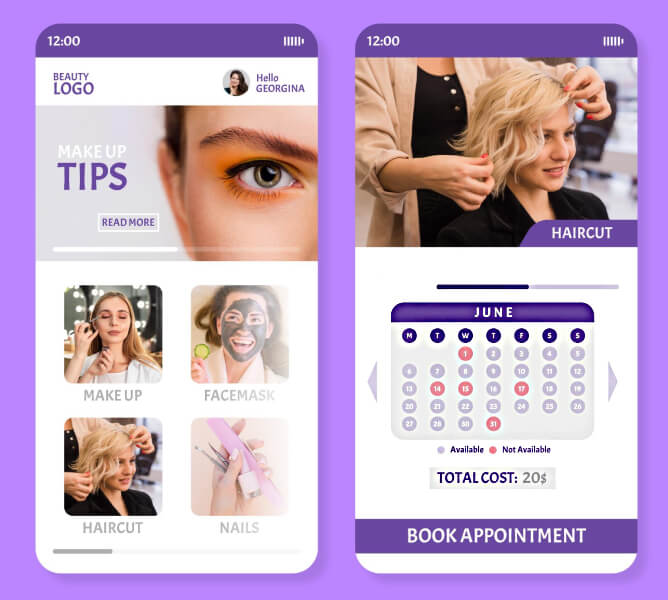
Think of it as the Uber way. When you book a cab, the app automatically assigns you a cab and driver without asking for choices. This approach simplifies the booking process and ensures quick service.
You can implement a similar system for your haircut app. When a customer requests, an algorithm automatically assigns a professional based on location, budget, and other factors. This method:
Reduces Decision Fatigue: Customers don't have to sift through multiple options, making the booking process faster and easier.
Optimizes Efficiency: Professionals are assigned based on proximity and availability, reducing wait times and maximizing the number of appointments handled.
Enhances Scalability: As your business grows, the automatic assignment system can handle a larger volume of requests without additional manual input.
2. Manual Selection Via a Service Card
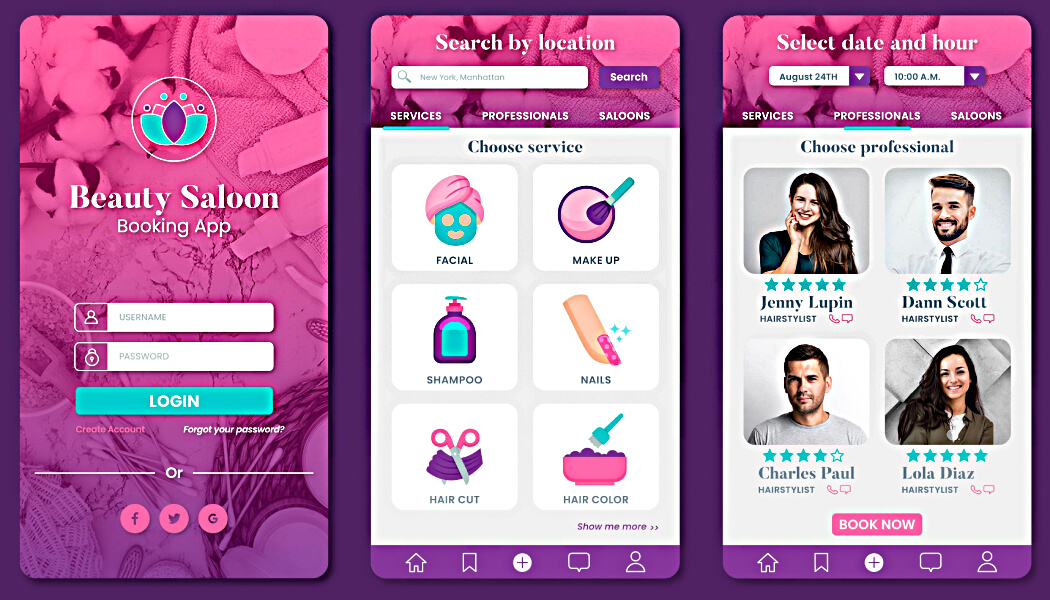
Consider a food delivery startup like Uber Eats, where customers can choose from various restaurants. This approach empowers users by offering them choices based on their preferences.
Incorporate this into your app by allowing customers to manually select professionals or service providers. Display relevant information such as:
Ratings and Reviews: Help customers make informed decisions by showing feedback from previous clients.
Services Provided: List each professional's specific services, making it easier for customers to find what they need.
Price Points: Display pricing to avoid any confusion or surprises.
Profiles and Portfolios: Showcase the professionals' work to build trust and attract more bookings.
This method:
Increases Customer Satisfaction: Customers appreciate having control over their choices and are more likely to be satisfied with the service.
Builds Trust: Providing detailed information about professionals helps establish credibility and trust.
Encourages Repeat Business: Positive experiences with selected professionals can lead to repeat bookings and customer loyalty.
3. Hybrid Approach
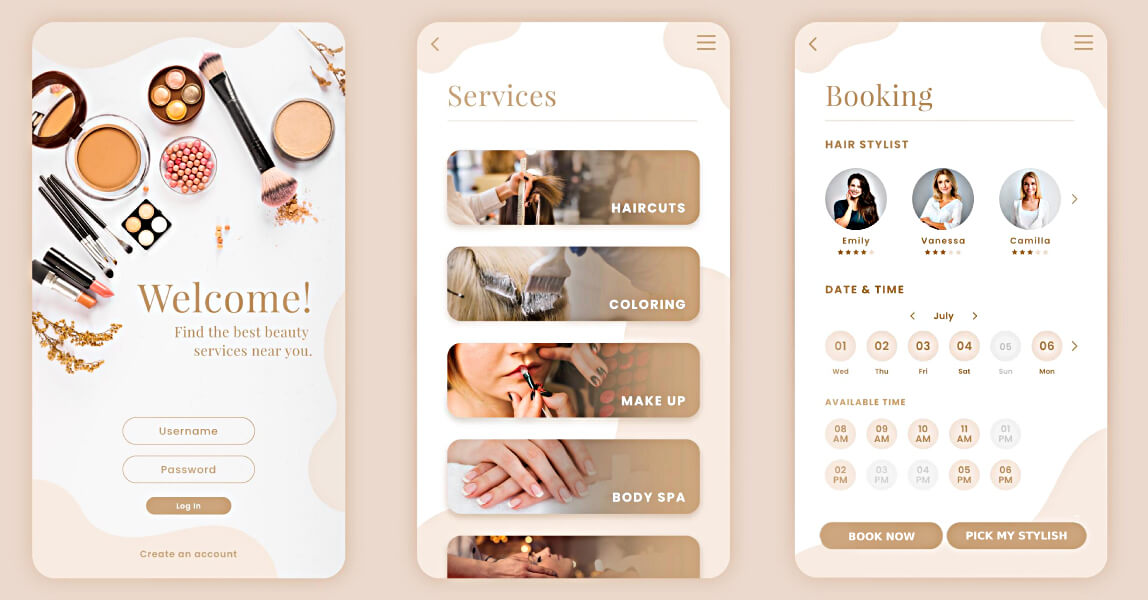
Combine the best of both worlds with a hybrid approach. Give customers the option to choose between quick, automatic assignments and manual selection. This flexibility can cater to different customer preferences and scenarios.
For example:
Quick Booking: Ideal for customers in a hurry who want a convenient and fast service.
Manual Selection: Perfect for those who prefer to choose their service provider based on specific criteria.
Implementing a hybrid approach can:
Broaden Appeal: Attract a wider range of customers with different needs and preferences.
Enhance User Experience: Offer a personalized experience that can adapt to various situations.
Improve Engagement: Customers are more likely to use the app regularly if it meets their unique needs.
Revenue Generation Model
Enough talking about the specifics. Now, let's come to the part where we talk about the money.
To build a sustainable and profitable revenue model for an on-demand haircut app, it's essential to consider various revenue streams that provide value to customers and service providers.
First, let's discuss how you can generate revenues from an app like Uber for haircuts and barber shops. There are several options for you to generate revenues, particularly:
1. Service Commission
Charging a commission on each booking is a fundamental revenue model for on-demand services. The app can take a percentage of the fee paid by customers for each service provided.
Key Points:
- Scalable Income: As the number of bookings increases, so does the revenue.
- Quality Incentive: Service providers are motivated to perform well to attract more bookings, benefiting both the app and the customers.
Example:
- A 10-20% commission is deducted from the service provider's earnings for each completed booking.
2. Marketing & Promotion
Generating revenue through marketing and promotional activities can be highly effective. This can include advertising within the app and partnering with related businesses.
Types of Advertising:
- Banner Ads: Display ads from local businesses, beauty product brands, or other relevant services.
- Sponsored Listings: Feature specific service providers or businesses prominently in search results.
- In-App Promotions: Collaborate with brands for exclusive in-app promotions or discounts.
Partnerships:
- Product Endorsements: Partner with brands for product endorsements and promotions.
- Affiliate Programs: Earn commissions by promoting and selling partner products through the app.
Example:
- A beauty product company pays to have their products featured in the app, offering discounts to users.
3. Loyalty/Subscription Programs
Offering subscription plans for customers and service providers can create a steady revenue stream while providing additional benefits and fostering loyalty.
Customer Subscriptions:
- Monthly/Annual Plans: Provide perks like discounted rates, priority booking, or access to top-rated professionals.
- Loyalty Programs: Offer rewards or credits for frequent users to encourage repeat business.
Example:
- A customer pays $9.99/month for a subscription that includes a 10% discount on all services and priority booking.
Provider Subscriptions:
- Enhanced Visibility: Subscribing professionals can be featured more prominently in search results.
- Advanced Tools: Provide subscribers with advanced tools for managing their bookings, customer relationships, and business analytics.
4. Guaranteed Booking Promise
Charging a premium for guaranteed bookings can attract customers who need assured appointments, especially during peak times.
Features:
- Priority Access: Customers willing to pay a premium can secure a guaranteed booking, bypassing potential wait times.
- Premium Service: Include additional services or benefits for customers opting for the guaranteed booking option.
Benefits:
- Increased Revenue: Premium pricing for guaranteed bookings can significantly boost earnings.
- Customer Satisfaction: Ensures high-value customers receive timely services, enhancing their overall experience.
Example:
- Customers pay an extra $5 to guarantee their booking during a busy weekend.
Technologies to Develop a Delivery App like Trim-it, theCut, booksy










How much does it cost to build an app like Uber for barbers?
We've discussed the concept, the features, and even how an on-demand app for haircuts can generate revenues.
Now, let's discuss the cost of developing the app.
Firstly, take your time with the low-cost mobile app developer you find. It is better to explore options and make an informed decision.
Secondly, mobile app development costs depend on the desired features, the platform you choose, and other specific aspects.
It is always wise to consult an experienced on-demand app development agency before finalizing the development.
Just to give you a basic idea, the on-demand app can cost anywhere between $3,000 to $15,000 USD.

Make an Informed Decision and Choose the Right Developer
When selecting a developer for your project, it's important not to take a shortcut.
Make sure to vet potential candidates thoroughly before making a decision. Do your research and choose someone who is recommended by trusted sources.
Just like how you wouldn't trust a traditional salon for a last-minute hairstyle emergency, you shouldn't settle for a subpar developer for your project.
There's no denying that the on-demand segment is hot right now. Every day, More and more apps are launched every day.
In such an ecosystem, having an experienced developer team can do wonders to your entrepreneurial ambitions.
WebsOptimization has been helping on-demand startup companies for years. Regarding on-demand apps like Uber for Salons and barbers, we've several successful projects under our sleeve.
The best part is that we are always ready to discuss your ambitions and suggest the right path. Our business development and technology consultants are ready to listen to you.
So, if you're on your way to launching an on-demand Uber for barber app, beauty app, Spa app, Salon management, and haircuts booking service startup, let's connect and explore the growth potential together.
FAQs
Q: What is an Uber for Haircuts marketplace app?
A: An Haircuts marketplace app is a platform where users can book hairstylists to come to their location and provide haircut services, similar to how Uber connects riders with drivers.
Q: How does a marketplace app for barbers work?
A: Users can browse through a list of available hairstylists, view their profiles and ratings, select a preferred stylist, and book an appointment for a haircut at their convenience.
Q: What are the benefits of using an Uber for Haircuts app?
A: Using an the app offers convenience as users can get a haircut at their desired location, saves time by eliminating the need to travel to a salon, and provides access to a variety of skilled professionals.
Q: How can I build a marketplace app for barbers like Uber for Haircuts?
A: To build a marketplace app for barbers, you would need to hire app developers, create user-friendly interfaces for both customers and stylists, incorporate secure payment gateways, and implement features like scheduling, notifications, and ratings.
Q: What features should be included in an Uber for Haircuts app?
A: Features like real-time booking, stylist profiles, in-app payments, scheduling, ratings and reviews, push notifications, and GPS tracking for stylists are essential for an on-demand haircuts app.
Q: How can an On-demand Haircuts app revolutionize the beauty industry?
A: An on-demand haircuts app can revolutionize the beauty industry by providing on-demand services, empowering hairstylists to work independently, offering convenience to users, and creating opportunities for skilled professionals to earn a living.
Q: What are some challenges in building a marketplace app for barbers?
A: Challenges in building a marketplace app for barbers include ensuring safety through background checks for stylists, managing logistics for on-demand services, attracting and retaining users and stylists, and staying competitive in a crowded market.

